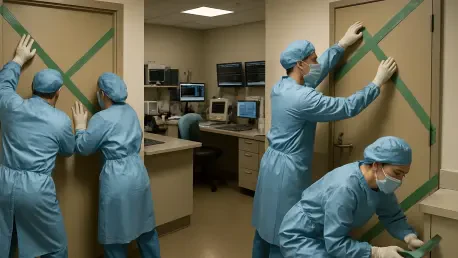In the face of a potential extended federal government shutdown, U.S. healthcare providers are grappling with unprecedented challenges that could disrupt everything from patient care to financial stability, prompting urgent strategic planning. A recent flash survey conducted among 152 healthcare executives from hospitals, physician groups, and diagnostic centers reveals a striking level of urgency and preparation to mitigate the impacts of such a crisis. Far beyond the often-discussed concerns over telehealth reimbursement, the findings paint a picture of a multi-dimensional approach encompassing financial safeguards, operational adjustments, technological readiness, and robust communication efforts. This comprehensive preparation underscores a deep-seated recognition among providers that a shutdown represents a profound stress test for organizational resilience. As uncertainties loom, the proactive steps being taken offer a glimpse into how the healthcare sector is bracing for potential disruptions while striving to maintain the continuity of essential services.
Financial and Operational Strategies
Building a Financial Safety Net
Healthcare providers are placing significant emphasis on financial preparedness to weather the potential storm of a government shutdown. A substantial 72% of surveyed executives reported accelerating claims submissions to Medicare, Medicaid, and commercial payers as a preemptive measure against payment delays. Additionally, 61% are focusing on bolstering cash reserves or securing lines of credit to maintain liquidity during uncertain times. Another 25% have taken the innovative step of establishing revenue cycle “war rooms” to monitor daily cash flow and tackle payer issues swiftly. These efforts reflect a strategic consensus that financial stability is paramount, serving as a critical buffer against the unpredictability of federal funding interruptions. By prioritizing these measures, providers aim to ensure that they can continue to meet payroll and other essential expenses, even if reimbursements are delayed for an extended period.
Ensuring Operational Continuity
On the operational front, the focus is squarely on maintaining service delivery despite potential constraints. Around 36% of providers are developing scheduling protocols that prioritize urgent care over elective procedures, a move designed to balance patient access with tighter financial margins. Meanwhile, 20% are stockpiling critical supplies for labs, imaging, and infusions to guard against shortages that could arise from disrupted supply chains. A smaller but significant 9% are setting up escalation pathways with payers to resolve coverage or authorization disputes quickly. This operational foresight highlights a shared understanding that continuity of care hinges on strategic resource management during a crisis. By anticipating bottlenecks and planning accordingly, healthcare organizations are working to minimize disruptions to patient services, ensuring that those in need of immediate care are not left waiting due to systemic failures.
Technological and Communication Preparedness
Safeguarding Critical IT Systems
Technology plays a pivotal role in the preparedness strategies of healthcare providers facing a possible shutdown. An overwhelming 73% of respondents indicated plans to freeze nonessential IT updates to protect vital claims and eligibility systems from potential glitches during a crisis. Additionally, 33% are implementing daily monitoring of payer gateway transactions to ensure seamless processing, while 22% have arranged backup clearinghouse options to prevent claims bottlenecks. This intense focus on technological stability underscores the recognition that IT infrastructure is the backbone of modern healthcare operations. By taking these precautionary steps, providers are striving to maintain the integrity of their systems, ensuring that billing and patient eligibility checks continue without interruption, even under the strain of a governmental standstill.
Enhancing Communication and Compliance
Effective communication and compliance efforts are also central to the preparedness blueprint. Approximately 33% of providers have assigned dedicated contacts to monitor updates from the Centers for Medicare & Medicaid Services (CMS) and payers regarding waivers and contractor activities. Another 26% have either planned or already issued patient communications to clarify the potential impacts of a shutdown on services. Meanwhile, 22% intend to pause non-urgent regulatory submissions, redirecting staff resources to more pressing needs. These actions demonstrate a unified commitment to transparency with patients and stakeholders while managing compliance challenges efficiently. By keeping lines of communication open and staying ahead of regulatory shifts, healthcare organizations are positioning themselves to navigate the complexities of a shutdown with clarity and accountability, minimizing confusion for both staff and the communities they serve.
Reflecting on a Resilient Response
Looking back, the multi-layered strategies adopted by U.S. healthcare providers in anticipation of a federal government shutdown showcased a remarkable depth of planning and adaptability. From accelerating financial processes to securing operational resources, stabilizing technology systems, and enhancing communication channels, the sector demonstrated a commitment to safeguarding both organizational health and patient care. Moving forward, the insights gained from these preparations could serve as a blueprint for future crises, emphasizing the importance of cross-functional coordination. Healthcare executives might consider further investing in predictive analytics to anticipate payment delays or supply chain disruptions. Additionally, fostering stronger partnerships with payers and vendors could enhance responsiveness in times of uncertainty. These steps, rooted in the lessons of past preparedness, offer a pathway to not only survive but thrive amidst potential governmental challenges.









